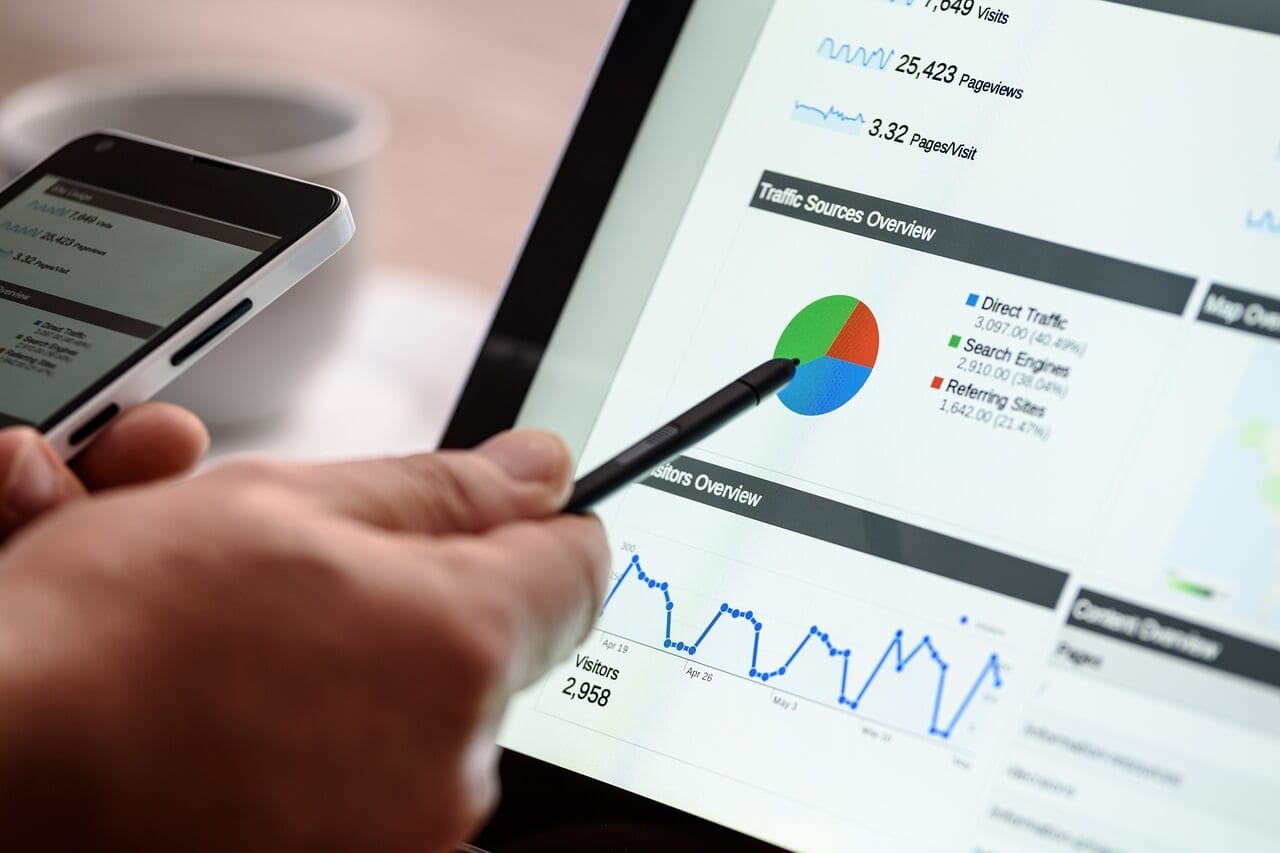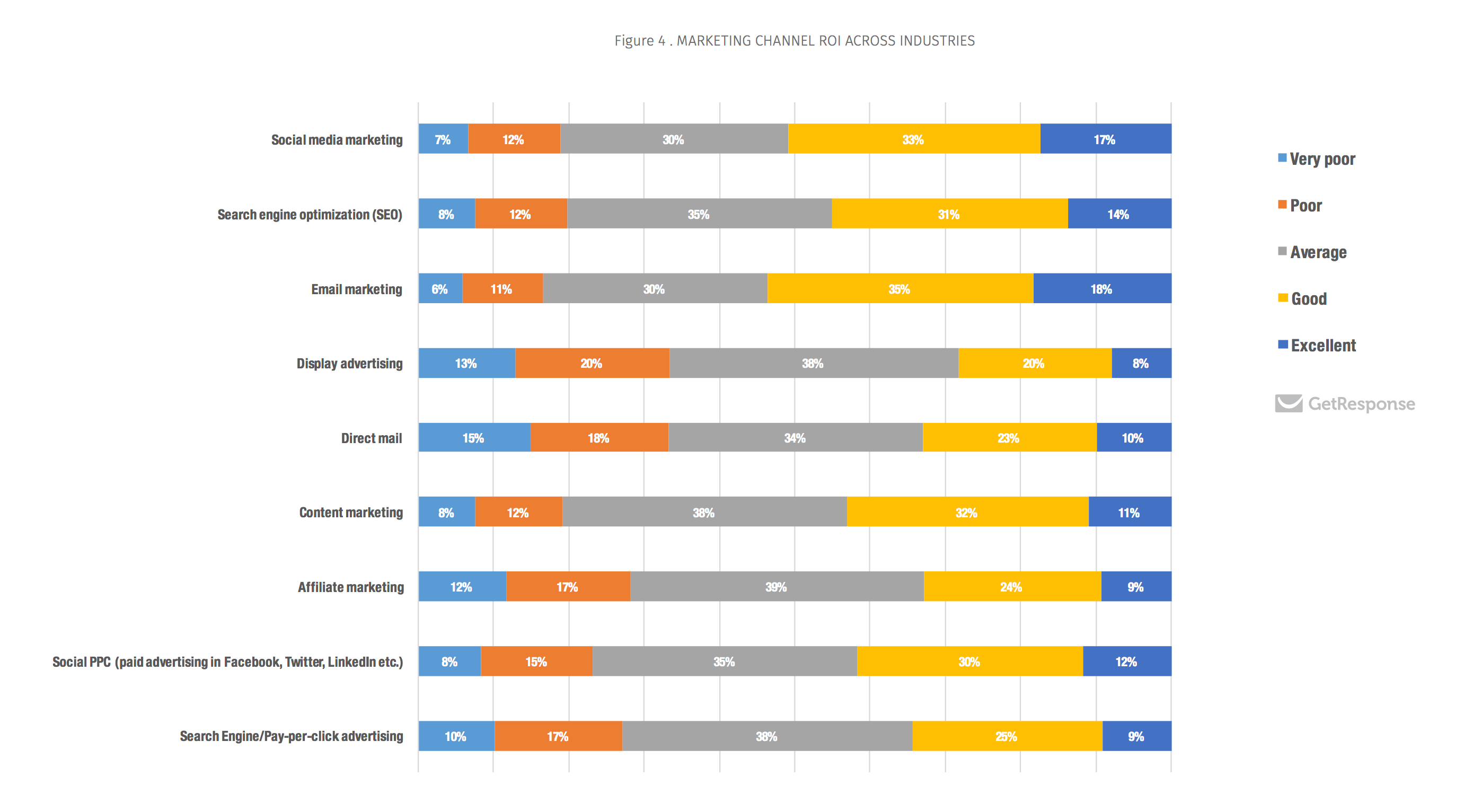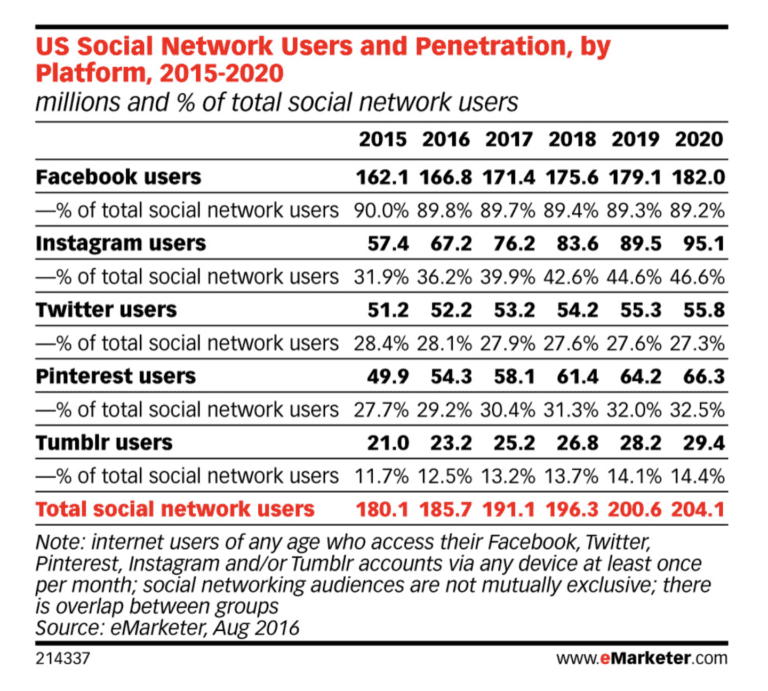Digital Marketing vs. Traditional Marketing
You are the owner of a small business, who offers a product or service that has immediate value to consumers or other small businesses. However, the competitive landscape has your offering sinking in the metaphorical marketing quicksand. As a business owner, you have a variety of channels to market your product or service, but you are not quite sure which will offer you the best return on investment (ROI). How do you make the right decision to make your product visible to consumers?
Historically, small businesses concentrated their marketing efforts on billboards, TV and radio ads, direct mail, and referrals. Let’s compare the ROI on these antiquated marketing channels with today’s digital opportunities. While a number of variables go into the cost of a billboard, including location and size, research shows that this form of marketing could cost you up to $10,000 – $20,000 for four weeks in a large city. According to Gaebler, which offers resources for entrepreneurs, a 30 second radio ad in Philadelphia costs $383.00…for one spot!
Key determining factors involved in where small business owners should invest their marketing budget include:
- Who is your target audience?
- Where does your target audience spend their time?
Are you going to reach your target audience through a radio or TV ad? Perhaps…However, you also want to ensure that the marketing funnel, or the steps that it takes to get from the ad to your website, is a smooth one. While most people have their phone on them at all times, are they likely to pick up their phone, search for your website, then visit your website while they are listening to the radio (and probably driving) or watching live TV or Netflix? If a person is driving down the highway, and they see your billboard ad, are they likely to pick up their phone (again, while driving) to visit your website? Possibly…but considering the high costs involved in traditional marketing, most small businesses today are looking for a cheaper, more effective approach to marketing with a higher ROI.
Investing in Digital Marketing
When developing a marketing plan, you need to simplify the steps involved in your marketing funnel that lead to potential sales.
This is where all businesses must consider digital marketing as a key component of an overall marketing strategy. In the blog post How Much Should You Budget For Marketing In 2018?, Chris Leone cites reports from Forrester Research and eMarketer that demonstrate a significant increase in digital marketing investments:
- In 2018, the average firm was expected to allocate 41% of their marketing budget to online, and this rate is expected to grow to 45% by 2020.
- Social media advertising investments will continue to grow, with a 17% compound annual growth rate from 2016 to 2021, and is expected to represent 25% of total online spending in 2018.
- Investment in paid search, display advertising, social media advertising, online video advertising and email marketing is predicted to account for 46% of all advertising by 2021.
In the article How Much Should Small Businesses Spend on Digital Marketing in 2017? Simon Grabowski, CEO and founder of GetResponse suggests “Digital marketing is vital for SMBs and our survey numbers bear that out. Marketers are investing accordingly, given the substantial return on investment delivered through web-based campaigns.” The article highlights statistics that show “70 percent of small to medium sized businesses said they will increase their digital/web-based marketing budgets this year. Additionally, small business marketing statistics from 2016 indicate that 62 % of small businesses are investing 4% to 12% of their overall revenue in marketing.”
Let’s do some math—if you are a small business that generates $100,000 in annual revenue, you should plan to invest roughly $4,000 – $12,000 a year on digital marketing. According to a poll conducted by AT&T in 2013, which surveyed one thousand nationwide small businesses, 66% of small businesses planned to increase investments in digital marketing including websites, social media, and online advertising. Cathy Martine, AT&T Executive vice president said “With a variety of digital tools such as email, websites and social media, coupled with the ability to both deliver and access them from mobile devices, small businesses are building new connections without borders.” Contrarily, in 2016 a survey conducted by Clutch, a leading B2B research firm asserts the majority of small businesses in the US do not engage in digital marketing. The survey results offer two main reasons preventing small businesses from partaking in digital marketing:
- Cost
- Inexperience with technology.
Concerning these survey results, Steve Pearson, CEO of Friendemic suggested “if you’re not a digital native, or if it’s not something you grew up with, it can seem too much.” Ultimately, small business owners HAVE to consider transitioning their marketing efforts to a digital strategy, which, along with a website, and SEO considerations, should be components of an overall organizational digital strategy.
In an economy dominated by technology, digital marketing is becoming increasingly relevant and necessary for your organization’s growth. In the aforementioned survey conducted by Clutch “over 80% of small businesses acknowledge that digital marketing is imperative to business success, and 70% indicate they plan to implement a digital marketing plan by 2017 or later.” Nevertheless, research shows the majority of small companies have not yet taken the leap into the digital marketing world. Contrasting evidence from the two surveys, separated by three years, demonstrates both value recognition for digital marketing as well as a reluctance to initiate a digital marketing strategy by small business owners. Does this sound like you?
Consumers Are Digitally Connected
Technology has increasingly become a part of people’s daily routine—today’s consumers are digitally connected. Accordingly, digitization has started to shape the way businesses and consumers interact with each other. Most notably, social media has had a transformational impact on business relationships, as consumers are gradually spending more time engaging in online dialogue, shopping, communicating with friends, and searching for information on various social media platforms. Consequently, digital marketing and social media offer potential for small businesses to connect with existing customers while attracting new leads in a more digitized and efficient fashion. Stated another way, you need to be seen where your customers are, and that’s online.
Effective digital marketing requires a novel, creative approach to marketing that does not simply involve digitizing current marketing strategies. Social media has become an important element of an organization’s digital marketing strategy and branding. A recent study involving 462 small to medium businesses in the US demonstrates many companies are struggling with the added responsibilities associated with integrating social media into their digital marketing strategy. Findings report that many of these small businesses are spending up to 6 hours per week on social media communications—one third of whom, want to spend less time on social media because it’s not where their expertise lies. However, the evolving digital marketing paradigm shift appears to have a positive impact on a company’s online performance by engaging customers, while building new and stronger relationships. A recent study outlined in The Effect of Customers’ Social Media Participation on Customer Visit Frequency and Profitability: An Empirical Investigation indicates that utilization of social media presents an opportunity to increase sales-related outcomes. Ultimately, companies with a high number of customers connected through social media are more profitable than those who have not shifted to digital marketing with social media.
The majority of small companies are in the early stages of integrating digital marketing channels into their core organizational strategy. In the article The usage of digital marketing channels in SMEs Taiminen and Karjaluoto offer statistics illustrating nearly half of the survey participants believed they utilized digital marketing “poorly or very poorly.” Conversely, only 7% of respondents described their current digital marketing as “very good or excellent.” The digital marketing channels used most often were company websites, SEO and social media though none were used very actively. Roughly half of the respondents considered their website as the most important tool for increasing sales. Correspondingly, websites were also cited as the primary tool for improving customer service, engaging customers, and advertising.
Which Digital Marketing Strategies Offer the Highest ROI?
In the post Digital Marketing by Small Businesses? Not Now, Say Most, Clutch says “Despite little or no engagement, 82% of small businesses believe digital marketing is critical to success, a new survey finds.” Statistics from Clutch demonstrate that small businesses that have started to use digital marketing prefer to use social media, “nearly 60% of small businesses currently engage in social media, and nearly 75% say they plan to implement some type of social media marketing strategy by 2017 or later.” Corresponding statistics show the most popular social media outlets utilized by small businesses include Facebook (89%), Twitter (49%), and LinkedIn (42%).
In a recent survey of 2,500 digital marketers performed by GetResponse, 60% of respondents reported that the ROI from social media marketing was either “Good” or “Excellent.”
Concerning which social media channels have proven to offer the best ROI:
- Facebook is on top as 90% of social media users are currently using the platform.
- Instagram use is expected to increase from 32% in 2017 to 47% in 2020.
- Twitter is expected to remain static at 27% between 2017 and 2020.
Clearly, social media has become ubiquitous in our lives both personally and professionally. Social media has also had an increasingly significant impact on the marketing world as its ROI has been proven to be effective. Earlier in this post I outlined some of the costs associated with traditional marketing including radio ads and billboards. While traditional campaigns still have a place in the world of marketing, the benefits of implementing a digital marketing strategy are clear:
- Digital marketing is significantly cheaper than traditional marketing. Depending on your goals, you can reach thousands of potential leads through a Facebook or Instagram ad for less than $10 a day.
- Digital marketing through social media allows you to engage consumers in a place where they are already spending a lot of their time for both business and personal activities.
- Digital marketing efforts offer real-time analytics that allows business owners to track conversions, leads, overall sales, etc.
According to Social Media Today, the average person will spend nearly two hours on social media everyday. That translates to a total of 5 years and 4 months spent over a lifetime! Here’s how much time people are spending on the most popular social media outlets:
- Over 40 minutes of a person’s day are spent on YouTube. Every day.
- Facebook users spend an average of 35 minutes a day.
- Snapchat users spend 25 minutes per day.
- Instagram users spend 15 minutes per day.
Based on my earlier contention that as a small business owner or marketer you have to be aware of who your target audience is, and where they spend their time—the above statistics are revealing and astounding. Your customer will not see your billboard or newspaper ad because their head is buried in a device! To effectively use marketing as a tool to drive web traffic, increase leads, and improve sales, you have to meet the consumer where they are—social media. Clearly, the age range of your target consumer will help determine where you will spend your ad budget. For example, if you’re a realtor, or a high-end apparel store, your target audience will most likely spend their time on Facebook and Instagram, whereas if you are a video game distributor, or an apparel store who targets teenagers, your audience is likely to spend their time on Snapchat and Instagram. As small business owners and marketers, we also have to be aware of trends—the fact that technology is dynamic and ever changing. The Millennials who are spending their time on Snapchat and Instagram, will be the adults, many of us are targeting in 5-10 years.
If you are a small business owner, you have to decide if you are willing and able to spend the necessary amount of time locating, defining and, targeting consumers through digital marketing. You may not have the time or the expertise with technology for this. Let VujaDay Creative Digital Agency develop a thorough digital marketing strategy for your business as a component of a more holistic digital strategy. Please contact us for a free strategy session.
For more details on how much time we are spending on social media, see the Infographic below from MediaKix.











2 Comments